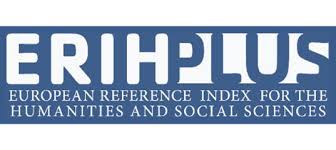The religious beliefs and the cultural imaginaries influence, in the artistic education creative processes, on the students of the town of Tambo, Nariño region, in Colombia
DOI:
https://doi.org/10.22267/rceilat.184243.18Keywords:
religious beliefs, culture, creativity, artistic educationAbstract
The object of this study of this research is religious and cultural beliefs, present in
young people and how they directly affect the creative processes in Art Education.
We will analyze the creeds in young people and how important it is in the processes
of creation, which will take the qualitative paradigm, because it allows an understanding
of the symbolic imaginaries, present in then and eleventh grade students, de la
Institución Educativa Municipal Sagrado Corazón de Jesús de El Tambo, Nariño. We
know that today secularization (disappearance - transformation of the religious) and
modernity centered on individualism, there is an emptying of the religious presence, giving strength to nihilism, scientism and a disenchantment of the world, Process
that has been changing and in the case of Latin America in a postponed manner. For
this reason, it will be investigated from the historical-hermeneutic approach, where
we have four aspects hermeneutically analyze: Religious beliefs, cultural beliefs in
adolescents, role of institutions and artistic creations, in order to better discern and
interpret the changing and dynamic world.
Downloads
References
ernard, H. (1994). Research methods in qualitative and quantitative approaches. Londres: SAGE.Borobio, D. Razones de fe ante la increencia hoy. Artículo. Por Universidad Pontificia de Salamanca - España. Conferencia Cali, Feb. 26 de 2010.
Durkheim, E. (1982). Las formas elementales de la vida religiosa. Madrid: Akal.
Eliade, M. (1970). Historia de las creencias y las ideas religiosas. Tomo I. Barcelona, Buenos Aires, México: Paidós S.A.
Eliade, M. (1981). Lo sagrado y lo profano, cuarta edición. Traducción Luis Gil. Guadarrama, Punto Omega.
España, G. (1999). Mutis y la Expedición Botánica. Bogotá: Panamericana Editorial Ltda.
Firolamo, G., Massenzio, M., Raveri, M., Scarpi, P. (2000). Historia de las religiones. Barcelona: Crítica.Geertz, C. (1973). La interpretación de las culturas. Barcelona: Gedisa.
Mucchielli, R. (1974). El cuestionario en la encuesta psicosocial. Madrid: Ibérico Europea de Ediciones.
Murillo, F. J. y Martínez-Garrido, C. (2010). Investigación etnográfica. Madrid: UAM.
Ortega y Gasset, J. (1986). Ideas y creencias. Buenos Aires: Revista de Occidente/Alianza.
Pajares, M. F. (1992). Teachers’ beliefs and educational research: Cleaning up a messy construct. Review of Educational Research, 62(3), 307-332.
Torre, S. de la (2003). Dialogando con la creatividad. De la identificación a la creatividad paradójica. Barcelona: Ediciones Octaedro.
Turner, V. (1999). La selva de los símbolos. México: Siglo XXI.
Villoro, L. (1982). Creer, saber, conocer. México: Siglo XXI.
Published
How to Cite
Issue
Section
Otras métricas:











_(2).png)








